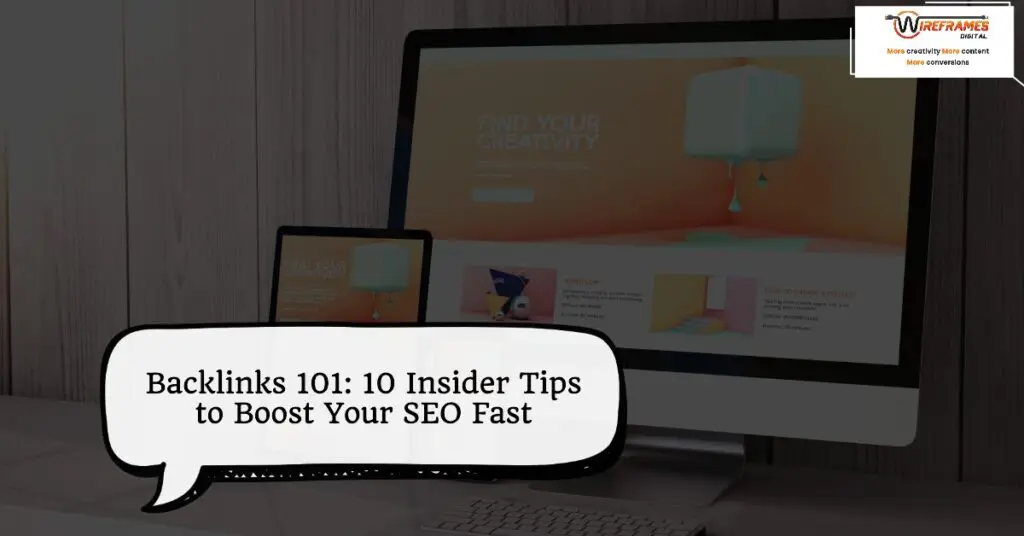Introduction to Backlinks
What are Backlinks?
In the realm of digital marketing, backlinks are a cornerstone of an effective Search Engine Optimization (SEO) strategy. Essentially, a backlink is a hyperlink from one web page to another. These can also be referred to as inbound links, incoming links, or one-way links. A backlink’s key role is to act as an endorsement or a recommendation from one site to another, suggesting that the content on the linked site is valuable and authoritative.
For instance, imagine you have a blog about gardening. If a reputable gardening magazine links to your blog, this link serves as a backlink. This endorsement can help elevate the perceived quality of your blog by search engines like Google.
Why Backlinks Matter?
Search engines like Google use backlinks as a way to gauge the importance and relevance of a website. Backlinks serve as votes of confidence, indicating to search engines that other websites find your content valuable and worth linking to.
The significance of backlinks is multifaceted:
- Search Engine Ranking: Quality backlinks can significantly impact your search engine rankings. Pages with a higher number of backlinks tend to rank higher on search engines.
- Referral Traffic: Good backlinks bring in traffic from other websites, known as referral traffic. This can increase visitors to your site beyond those who find you through search engines.
- Building Domain Authority: The more authoritative the sites linking to you, the better your own site’s perceived authority will be. High domain authority can lead to better rankings and more traffic.
Types of Backlinks and Their Value
DoFollow vs. NoFollow Backlinks
Explanation of DoFollow Backlinks
DoFollow backlinks are the most highly regarded in the SEO community because they pass on “link juice,” or equity, from the linking site to the linked site. When a website with high authority links to your site with a DoFollow link, it transfers some of its credibility to your site. For example, if Forbes.com links to your site, this DoFollow link can greatly boost your own site’s authority.
Explanation of NoFollow Backlinks
Conversely, NoFollow backlinks include a special attribute in the HTML tag: rel="nofollow". This tells search engines not to follow the link, meaning that no authority is passed on from the linking site. NoFollow backlinks are often used in user-generated content such as comments, forum posts, and sometimes in paid advertisements. While they don’t directly boost your search rankings, they can still drive traffic and provide indirect SEO benefits by increasing brand visibility.
How Each Type Affects Google’s Algorithm
Google’s algorithm is complex and evaluates DoFollow backlinks more heavily than NoFollow backlinks when determining rankings. However, a natural backlink profile includes a mix of both types. This variety appears more organic to Google and reduces the risk of penalties. An effective SEO strategy should ideally aim for a balanced and diverse backlink profile.
Editorial Backlinks
What are Editorial Backlinks?
Editorial backlinks occur when other websites naturally link to your content because they find it informative, useful, or valuable. These backlinks are not solicited or paid for but are earned due to the quality of your content.
Why They’re Highly Valued
Editorial backlinks are highly esteemed by search engines because they are seen as genuine endorsements. They are given freely based on the merit of your content, suggesting that your website is an authoritative source of information within your niche.
Real-Life Examples and Case Studies
Consider the example of Brian Dean from Backlinko. He developed a case study on the controversial SEO technique known as “the Skyscraper Technique.” Thanks to its detailed analysis and practical advice, numerous industry blogs referred to and linked back to this case study, earning Backlinko several high-authority editorial backlinks.
Guest Post Backlinks
Crafting High-Quality Guest Posts
Guest posting entails writing articles for other blogs within your niche, with the objective of securing backlinks to your own site. The key to a successful guest post is crafting content that is not only high-quality but also relevant and engaging to the host blog’s audience.
- Ensure Relevance: Your guest post should align with the host blog’s topics and audience interests.
- Add Value: Provide in-depth, actionable insights that offer real value to the readers.
- Include Natural Links: Include backlinks to your site naturally within the content, providing further reading or resources that enhance the article.
Identifying Relevant Blogs for Outreach
To maximize your guest posting efforts, you need to identify blogs that are authoritative and relevant to your industry. Use tools like Moz’s Domain Authority checker to find high-DA sites, and conduct a Google search with keywords related to your niche followed by phrases like “write for us” or “guest post guidelines”.
Example:
If your niche is digital marketing, you might search for:
“digital marketing guest post guidelines”
“write for us digital marketing”
Benefits and Potential Risks
Guest posting can offer substantial benefits:
- Increases your brand’s visibility and reach.
- Drives qualified traffic to your site.
- Enhances your backlink profile with high-quality, relevant links.
However, it also carries risks:
- Publishing too many low-quality guest posts can lead to penalties from search engines.
- Producing subpar content can harm your reputation and that of the host blog.
Comment Backlinks
Best Practices for Blog Comments
Comment backlinks are earned by participating in the comment sections of other blogs. While these links are typically NoFollow, meaningful and relevant comments can drive traffic and foster relationships with other bloggers.
- Be Relevant: Leave comments on industry-related blogs where you can add value.
- Be Insightful: Provide thoughtful insights or add to the discussion with useful information.
- Avoid Spam: Don’t use comments merely to drop links. This can hurt your reputation and result in your comments being marked as spam.
Evaluating the Quality of Forums and Blogs
Before commenting, it’s essential to evaluate the quality and relevance of forums and blogs. Look for platforms with high domain authority, regular engagement, and active, vibrant communities.
Example:
If you’re in the tech niche, contributing to blogs like TechCrunch or forums like Stack Overflow can yield better results than random low-quality forums.
Potential SEO Impact
While NoFollow comment backlinks might not contribute directly to your search rankings, they aid in creating a natural link profile and can drive considerable referral traffic through well-placed, insightful comments.
Innovative Backlinking Strategies
Building Profile Backlinks
Platforms to Establish Your Profile
Creating profiles on high-authority platforms can help build valuable backlinks. These profiles often allow you to include a link to your website, thereby generating a backlink.
Popular platforms:
- LinkedIn: Leverage LinkedIn for professional networking and include your website in your profile.
- GitHub: For developers, including a link in your GitHub profile can be highly beneficial.
- Quora: Include your site link in your Quora profile while also answering relevant questions to drive traffic.
Proper Methods for Profile Link Insertion
Ensure that your profile links appear genuine and natural. Fully complete your profiles with accurate, relevant information and avoid overloading them with unnecessary links.
Social Bookmarking
Popular Social Bookmarking Sites
Social bookmarking sites allow users to store, share, and discover web content, making them useful for gaining backlinks and driving traffic.
Popular sites:
- Reddit: Engage in niche-specific subreddits and share valuable content.
- StumbleUpon: Although now defunct, it was previously a prevalent platform. Consider current alternatives like Mix.
- Digg: Share high-quality content to potentially reach a broader audience.
- Delicious: Another platform for discovering and sharing web content.
Techniques for Effective Bookmarking
Effective social bookmarking involves:
- Sharing high-quality, valuable content.
- Actively engaging with other users by voting on and commenting on their submissions.
- Regularly participating in pertinent discussions.
Measuring Traffic and SEO Impact
Use tools like Google Analytics to track the traffic driven from social bookmarking sites. Monitor which platforms bring the most traffic and adjust your strategy accordingly.
Directory and RSS Feed Backlinks
High-Quality Directory Submissions
Submitting your website to reputable online directories can help improve your backlink profile. Focus on directories that are industry-specific and have a high domain authority.
Examples:
- DMOZ: Although DMOZ has been shut down, similar directories still offer value.
- Yahoo Directory: Once a staple, no longer operational but serves as a good historical example.
- Niche-Specific Directories: Look for directories related to your industry or region.
Maximizing RSS Feed Reach
RSS feeds allow users and other websites to subscribe to your content updates. Make sure your RSS feed is clearly accessible and submit it to RSS directories.
Examples:
- Feedly: Grow your following by making your RSS feed available on a popular content aggregator.
- Alltop: Submit your RSS feed to Alltop in your relevant category.
Leveraging Advanced Backlink Techniques
Press Releases and News Outlets
Crafting Effective Press Releases
Press releases can earn you backlinks from news outlets and help you reach a broader audience. To craft an effective press release:
- Choose newsworthy topics: Ensure the content is truly newsworthy and noteworthy.
- Tailor to the audience: Tailor your press release to the specific audience of the media outlet.
- Include relevant keywords: Optimize your press release with relevant keywords for SEO benefits.
Identifying High Authority News Sites for Link Building
Submit your press releases to high-authority news sites and press release distribution services like PRWeb, PR Newswire, and Business Wire. These platforms can help you distribute your news to multiple high-DA news sites.
Badges, Infographics, and Webinars
How to Create Engaging Badges
Creating badges can encourage other websites to link back to yours. For instance, you could create a badge for “Top 10 Gardening Blogs” and offer it to sites that make the list.
Tips for creating badges:
- Design: Create an appealing and professional badge.
- Criteria: Establish fair and transparent criteria for awarding badges.
- Outreach: Conduct outreach to let the deserving blogs know about their awards.
Designing Shareable Infographics
Infographics are a powerful way to earn backlinks because they present data visually in a way that’s easy to share.
Steps to create effective infographics:
- Choose a Relevant Topic: Pick a topic that’s relevant and engaging to your audience.
- Design Professionally: Use tools like Canva or hire a graphic designer for a polished look.
- Promote: Share on social media, and email newsletters, and submit to infographic directories.
Hosting Webinars to Attract Backlinks
Webinars can position you as a thought leader and attract backlinks from attendees who find your knowledge valuable.
How to host effective webinars:
- Planning: Choose relevant topics and prepare high-value content.
- Promotion: Promote the webinar through email marketing, social media, and partnerships.
- Follow-up: Offer post-webinar resources, encouraging participants to share with backlinks.
Example:
Hosting a webinar on “Advanced SEO Techniques” and sharing insights and proprietary techniques can foster backlinks from those who attend and reference your content.
Influencer and Testimonial Backlinks
Collaboration with Industry Influencers
Collaborate with influencers in your industry to gain high-quality backlinks. Influencers have the audience’s trust and can provide credible backlinks to your content.
Strategies for effective collaboration:
- Identify Influencers: Use tools like BuzzSumo to identify relevant influencers.
- Engage Authentically: Build genuine relationships rather than outright pitching for backlinks.
- Mutual Benefits: Offer something of value in return, such as free products or services.
Securing Testimonials and Product Reviews
Encourage satisfied customers to leave testimonials and product reviews on their websites, which can also include backlinks.
Steps to secure testimonials:
- Request Authentically: Ask satisfied customers to share their experiences.
- Provide Ease: Make it easy for customers to leave a review, providing guidelines or templates.
- Feature Prominently: Offer to feature their testimonial on your website.
Ethical Practices and Avoiding Penalties
Understanding Google’s Algorithm
How Google Evaluates Backlinks
Google’s algorithm evaluates backlinks based on various factors like:
- Relevance: Links from sites related to your industry have more value.
- Authority: Links from high-DA sites carry more weight.
- Diversity: A natural backlink profile includes a mix of different types of backlinks.
Keeping Up with Algorithm Updates
Google frequently updates its algorithms to counteract manipulative tactics and improve search results. Staying updated with these changes can help you adapt your backlink strategy accordingly.
Identifying and Avoiding Black Hat Techniques
Risks Associated with Paid Backlinks and PBNs
Paid backlinks and Private Blog Networks (PBNs) might offer quick benefits but carry significant risks. Google penalizes sites using manipulative practices, which can result in drops in ranking or even de-indexing.
Importance of Organic Link Building
Focusing on organic link-building strategies by creating high-quality content and fostering genuine relationships in your industry ensures compliance with guidelines and long-term success.
Establishing and Monitoring Your Backlink Profile
Tools for Backlink Analysis
Use tools like Ahrefs, SEMrush, Majestic, and Moz to analyze your backlink profile. These tools help you monitor new and lost backlinks, evaluate link quality, and identify potential issues.
Regular Audits to Ensure Quality
Conduct regular backlink audits to ensure your backlinks are high-quality and relevant. Disavow low-quality or spammy links that can negatively affect your SEO.
How to conduct a backlink audit:
- Collect Backlink Data: Use SEO tools to gather data on your backlinks.
- Assess Link Quality: Evaluate each backlink based on its source authority, relevance, and link type.
- Disavow Low-Quality Links: Use Google’s Disavow Tool to disavow harmful links.
Conclusion and Key Takeaways
Summarizing the Importance of Various Backlinks
In conclusion, backlinks are fundamental to a successful SEO strategy. They act as endorsements from other sites, helping establish your website’s authority and relevance. By understanding and leveraging different types of backlinks, including DoFollow, NoFollow, editorial, guest post, comment, social bookmarking, and infographic links, you can significantly boost your site’s search engine ranking.
Next Steps for Effective SEO
To continue advancing your SEO efforts:
- Stay updated with industry trends and algorithm changes.
- Focus on producing valuable, high-quality content.
- Build and maintain genuine relationships within your industry.
- Regularly audit your backlink profile to ensure its quality and relevance.
By following these best practices and continuously adapting your strategy, you can ensure long-term SEO success and sustain the growth of your online presence.
















